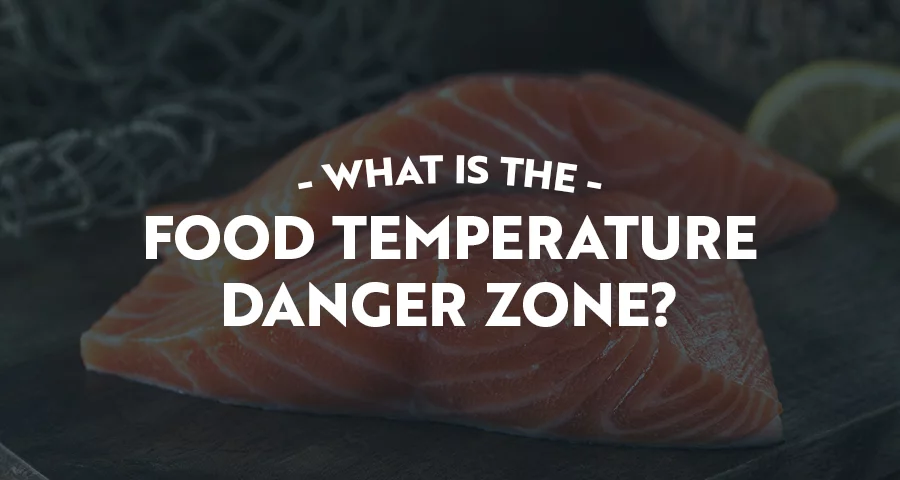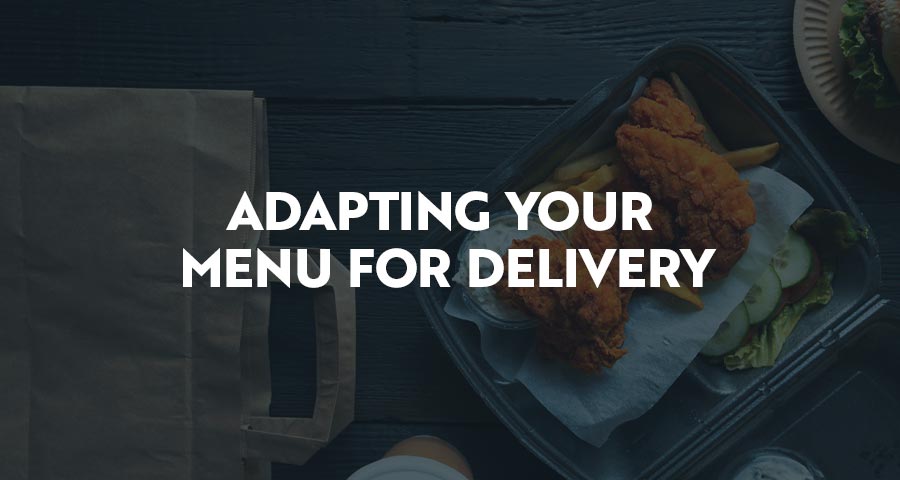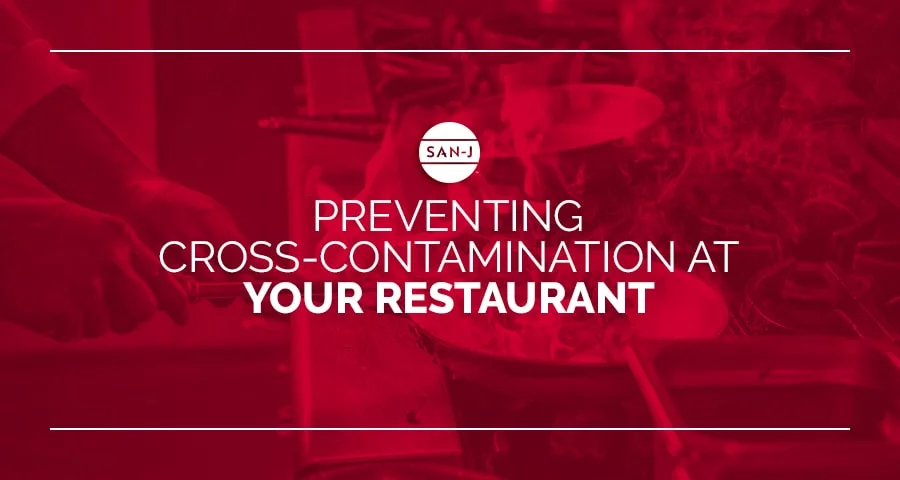Did you know that proper food storage and preparation play an important role in your health and safety? Improper handling of certain foods like meat, milk and seafood can cause harmful pathogens to grow, potentially making you sick after eating the food.
How do you know if you’re cooking and storing your foods at a safe temperature that prevents bacterial growth? This article will explore the food temperature “danger zone” and provide tips on proper cooking and storage.
What Is the Temperature Danger Zone?
The food temperature “danger zone” describes the temperature range at which bacteria start to grow on food. The Food Safety and Inspection Service (FSIS) considers 40 to 140 degrees Fahrenheit to be the food temperature danger zone. Bacteria grow most rapidly in this temperature range, doubling in number in just 20 minutes.
When you leave perishable foods — like meat, poultry, seafood, dairy, eggs and cooked leftovers — sitting out in this temperature range for too long, foodborne pathogens like salmonella, staphylococcus aureus, Escherichia coli (E. coli) and campylobacter can grow at dangerous levels. These pathogens can make you sick if you consume the food. Common symptoms of foodborne illness are nausea, vomiting, diarrhea and stomach cramps, usually lasting anywhere from one to seven days.
To prevent the growth of bacteria and the risk of foodborne illness, it’s important to store perishable foods at the right refrigerator, freezer and heating temperatures. Keeping them above 140 or below 40 degrees Fahrenheit can prevent the growth of harmful pathogens. Cooking your food thoroughly can also kill bacteria.
Risks of the Temperature Danger Zone
As mentioned, exposing perishable foods to room temperature for too long can present health-related risks from foodborne illness. Some common bacteria strains that develop in the temperature danger zone include:
- E. coli: E. coli bacteria typically live in the intestines of healthy people and animals. Most strains are harmless and can even aid digestion, but some can induce severe stomach cramps, vomiting or bouts of diarrhea. Most people recover within five to seven days.
- Staphylococcus aureus: Germs from staph infections are usually found on the skin or in the nose. In most cases, staphylococcus bacteria only cause relatively minor skin abscesses. However, it can infect the joints and bloodstream in more severe instances. Staph infection treatment usually involves antibiotics and cleaning of the infected area.
- Salmonella enteritis: Salmonella symptoms usually set in between 12 and 72 hours after consumption and can include abdominal cramps, fever and diarrhea lasting around four to seven days. Most people recover from salmonella without antibiotic treatment.
While anyone can develop a foodborne illness, certain groups have a higher risk of experiencing more serious complications like listeriosis. Higher-risk populations include:
- Infants and young children
- Older adults
- Pregnant women
- Immunocompromised people
To prevent infection from listeria, it’s recommended that these groups only consume foods like deli meats and hot dogs if they’ve been reheated to 165 degrees Fahrenheit or are steaming hot. Pregnant women are advised to avoid raw meat, shellfish, deli salads and similar foods altogether.
While developing serious illness through contaminated foods is rare for most, it’s still important to prioritize your safety by following the best practices for food storage, cooking and handling, which we’ll explore below.
Hot Food vs. Cold Food
Different delivery and food storage situations require varying hot and cold temperatures, but each one should be executed with the same primary goal — keeping the food away from the temperature danger zone until serving. You’ll want to be particularly mindful of safe food temperatures in scenarios such as:
- Transporting food to a catered event: Food transportation must comply with guidelines for safe consumption, like food pan carriers or insulated bags.
- Storing food for extended periods: Circumstances involving extended food storage times might include a hot buffet or cold salad bar.
- Storing food in unusual locations: You’ll want to be cautious when storing food in unusual locations with extreme or fluctuating temperatures, like at the beach, inside of a car or on a boat.
Whether you’re serving food hot or cold, it’s important to follow these tips to keep them out of the danger zone:
- Hot foods: Hot foods should be kept at a temperature of 140 degrees Fahrenheit or higher. If you’re not serving it immediately or it will continue sitting out after serving, the food should be kept in a crockpot, warming vessel, steam table or another type of warming device.
- Cold foods: Cold foods should maintain a temperature of 40 degrees Fahrenheit or lower. To keep the food cold, you can place containers in ice or refrigerate them until they’re ready to serve.
Remember that you should never leave food out of refrigeration for more than two hours. Put it in the refrigerator or freezer within two hours after cooking or buying it from the store. If the temperature is above 90 degrees Fahrenheit, the food should be left out for no longer than one hour.
How to Safely Cook Food
Remember that heat kills germs, so when cooking raw meat or poultry, maintaining a safe internal temperature is important to prevent bacterial growth. Ensure you always roast poultry and meat at an oven temperature of 325 degrees Fahrenheit or higher.
Here are the safe cooking temperatures for different types of meat:
- Beef, pork and lamb: 145 degrees Fahrenheit
- Fish: 145 degrees Fahrenheit
- Ground beef, lamb and pork: 160 degrees Fahrenheit
- Chicken, turkey and duck: 165 degrees Fahrenheit
You can use a food thermometer to check the meat’s internal temperature periodically. Merely examining its color and texture isn’t enough to determine if it’s reached a safe cooking temperature.
As a reminder, the food should maintain a temperature of 140 degrees Fahrenheit or above if you’re not serving it right away after cooking. Use a heating vessel to keep up this temperature if the meat will sit out.
Here are some additional tips for cooking food safely to prevent bacterial growth:
- Cook eggs thoroughly: Cook eggs until the whites and yolks are firm — don’t consume them raw.
- Rotate microwaved foods and allow standing time: When cooking food in a microwave oven, cover, stir and rotate it to cook it evenly. Manually rotate the dish once or twice if there’s no turntable. Allow a few minutes of standing time — so cold spots can absorb heat from hotter ones and complete cooking — before checking the internal food temperature with a food thermometer.
- Boil sauces: When heating or reheating foods like soups, sauces and gravy, ensure they come to a boil.
How to Safely Store Food
Improper cooling of cooked foods is one of the most common causes of foodborne illness. Bacteria can return to food even after it’s been safely cooked. That’s why you should place it in a shallow container for quick cooling and refrigerate it at 40 degrees Fahrenheit or lower within two hours.
As we touched on previously, regularly monitoring temperature is the best and easiest way to keep food out of the danger zone. This applies to cooking and preparing foods, as well as storing foods at a buffet, at a salad bar or in the fridge.
Here are some tips for safely storing and monitoring your food:
- Regularly monitor the internal temperatures of your refrigerator and freezer with a built-in or installed thermometer.
- Use a backup thermometer to ensure your main thermometer’s readings are accurate.
- Create an ongoing log to record the time and temperature, as you might require these for future reference.
- Maintain your thermometer with proper cleaning and calibration per the manufacturer’s instructions.
To prevent an unsuspecting dinner guest from ingesting bacteria-ridden food, both refrigerators and salad bars are required to maintain a temperature of 40 degrees Fahrenheit or below. This guideline is especially important for foods that are especially susceptible to bacterial development, such as:
- Cheese
- Yogurt
- Eggs and egg products
- Certain oils and salad dressings
- Meat
- Seafood
- Poultry
How to Safely Handle Leftovers
Whether you’re sending some doggie bags home with your dinner guests or saving them as a snack for later on, it’s important to watch the clock with leftovers. If you don’t cool foods properly and promptly, it can lead to bacterial growth. Leftovers should be refrigerated as soon as you or your guests arrive home and within two hours.
When putting leftovers in the fridge, use shallow containers that allow them to cool faster, as the goal is to reach a temperature of 40 or below within two hours. Larger containers require more time to cool, which may indicate the middle section of the food is still warm despite the top part being cooler. This could provide a window for bacteria to grow on the food.
When reheating your leftovers, ensure the food achieves an internal temperature of 165 degrees Fahrenheit or is steaming and hot. Remember not to thaw food at room temperature, like on a countertop. Three safe ways to defrost food are in cold water, in the refrigerator and in the microwave. Food thawed in the microwave or in cold water should be cooked right away. Additionally, food should always be marinated in the refrigerator rather than at room temperature.
Other Tips and FAQs
Now that we’ve covered the basics of safely cooking, storing and handling different types of foods, we’ll provide some answers to FAQs and additional tips for avoiding the food temperature danger zone below.
1. How Often Should You Check the Holding Temperature?
Whether holding hot or cold food, it’s recommended that you check the temperature at least once every four hours. As a precautionary measure, checking it every two hours allows ample time to take corrective action should the food fall into the danger zone, ensuring it’s free of bacterial contamination and thus safe to eat.
2. How Do You Use a Food Thermometer?
Oven-safe digital probe thermometers have metal stems that you insert into meat. The probe that goes into the meat is connected to a base that sits outside of the oven, displaying the temperature while the meat cooks.
Different types of food thermometers work better for different dishes as well. For instance, larger oven-proof dial thermometers are suitable for whole roasts and poultry. Guide the thermometer to the middle of the dish without letting it touch the bottom of the pan, as this can result in an inaccurate reading. Insert the probe into the thickest part of the meat while avoiding any fat or bones.
You should then see the temperature on the display screen rapidly increase. Remember to record how long the temperature remains at or above the recommended temperature.
Meanwhile, smaller digital thermometers can work well for thin foods like chicken breasts, hamburgers and pork chops. Insert the stem a couple of inches into the thickest part of the food without touching bone or fat. The temperature should register in a few seconds.
When you’re finished monitoring the temperature, ensure you clean the probe properly with disinfectant wipes to prevent bacterial transfer.
3. Check Your Microwave Wattage
Microwaving food thoroughly is important for preventing bacteria. Make sure you’re following the manufacturer’s recommended cooking and standing times. It’s also helpful to know your microwave’s wattage — remember that the higher the wattage is, the faster it cooks food. If you’re unsure of the wattage, you can usually find it inside the door, in the owner’s manual or on the manufacturer’s website.
If your microwave has a higher wattage of 800 or more watts, it’s recommended that you use the minimum cooking time listed. For a lower wattage of 300 to 500, use the maximum recommended cooking time. When reheating food in the microwave, remember to use a food thermometer to confirm the food has reached 165 degrees Fahrenheit.
4. Prioritize Cleanliness
Cross-contamination happens when harmful bacteria transfer to food from someone’s hands, other foods, utensils, equipment or surfaces. Therefore, washing your hands, countertops and cooking tools can help prevent the spread of bacteria and foodborne illnesses. Here are some tips to prevent cross-contamination and prioritize cleanliness:
- Wash your hands in hot, soapy water for at least 20 seconds before and after handling food.
- Wash dishes, cutting boards, utensils and countertops with soap and hot water after working with each food item.
- Rinse fruits and vegetables.
- Don’t wash meat, poultry, eggs or fish — water can splash from the sink and spread bacteria.
- Separate raw foods from cooked foods by using separate countertops, cutting boards and equipment.
Protect Your Food From the Food Temperature Danger Zone
To prevent the growth of harmful pathogens and bacteria and reduce the risk of foodborne illness, proper cooking and food storage are essential in both homes and business settings. At San-J, we strive to promote the safe food practices for individuals and businesses alike, all while providing them with our rich, flavorful Tamari Soy Sauce products.
If you’re seeking helpful food-related resources or looking for a way to boost your dishes with umami-rich flavors, we’re happy to help! Whether learning about how pressure cookers work, how pots and pans affect food or Tamari taste profiles, we’re your source for food tips and high-quality Tamari. Visit our blog or browse our Tamari selection today!



